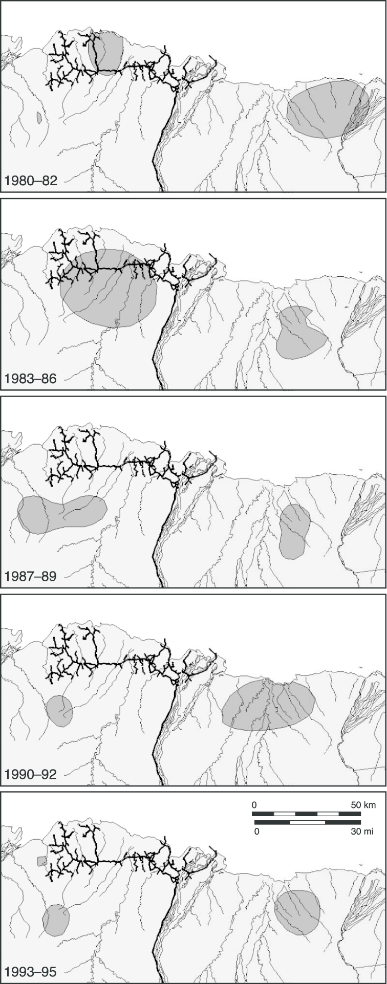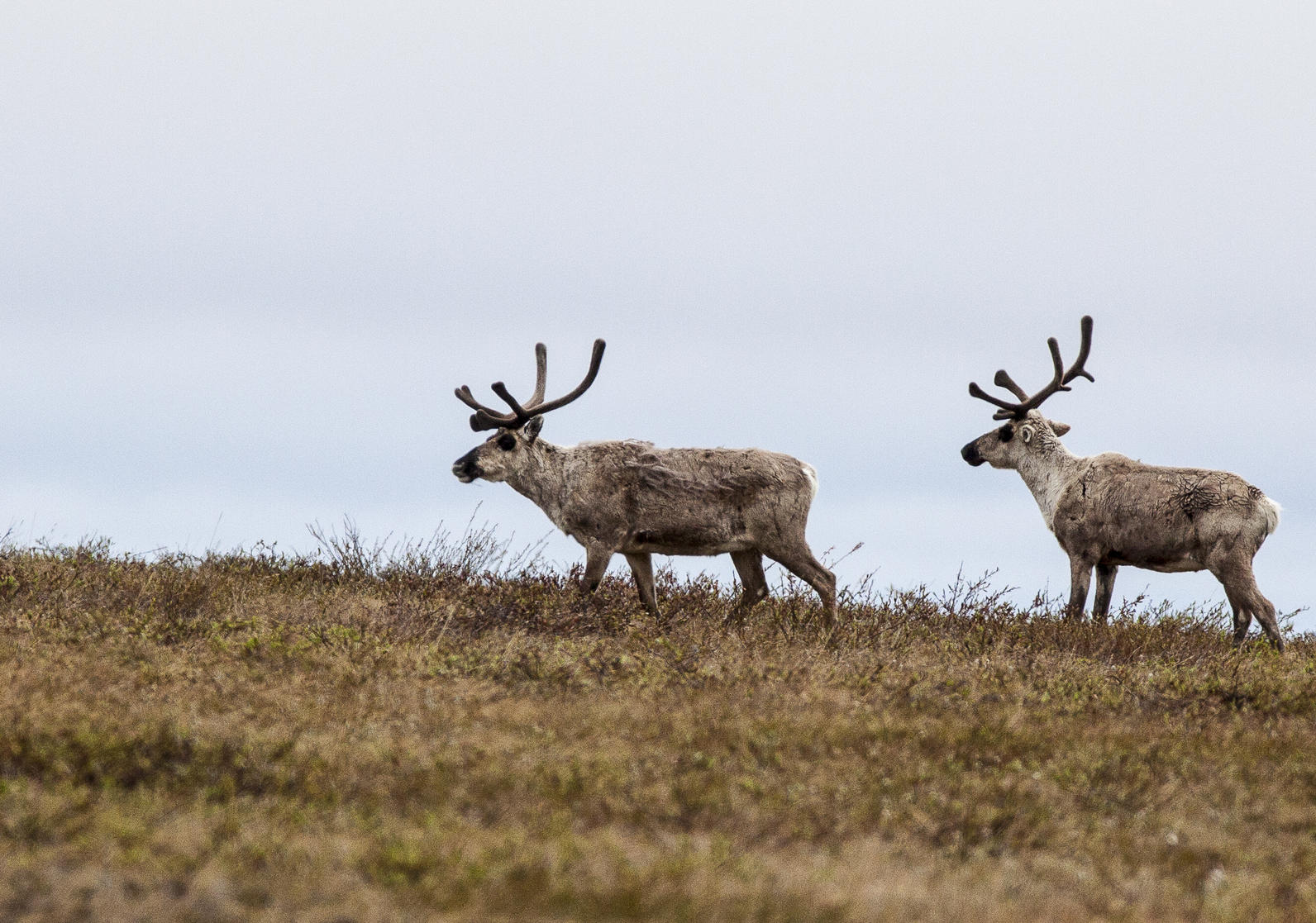Alaska’s Arctic is home to four distinct caribou herds, two of which seasonally encounter oil and gas infrastructure. The Teshekpuk Caribou Herd uses calving grounds within the Western Arctic, primarily on currently protected land around Teshekpuk Lake. In contrast, the calving grounds for the Central Arctic Herd (CAH) is further east, near the heavily industrialized Prudhoe Bay oil fields. As oil infrastructure proliferated in Prudhoe Bay in the 1980s and 1990s, researchers documented a dramatic shift in the herd’s calving grounds. The western portion of the CAH calving grounds moved south, during construction of gravel roads, pipelines, and oil drilling complexes. Over the identical time period, the eastern portion of the CAH calving grounds stayed steady in place. Although it’s impossible to say for certain whether the CAH shifted because of oil and gas infrastructure, this pattern presents pretty strong evidence (see diagram).

The problem with shifting calving grounds is that caribou could be pushed onto poorer quality habitat. Caribou travel thousands of kilometers over the course of a year and arrive on their calving grounds just in time to give birth. The calving grounds that caribou prefer likely offer better food resources, fewer predators, better escape from insects, or some combination of these factors. If pregnant female caribou are displaced from preferred calving locations, it’s possible that their new calving grounds won’t provide good enough conditions to raise healthy calves.

One concern arising from development in the Western Arctic is that infrastructure could push the Teshekpuk Caribou Herd into less optimal calving grounds. The pace of development in the National Petroleum Reserve-Alaska (NPR-A) in the Western Arctic is increasing, leaving less time to understand how infrastructure is starting to affect the Teshekpuk Caribou Herd. The oil company ConocoPhillips has announced it will build a new oil drilling operation in the NPR-A this winter, called GMT2. The oil company also recently proposed a big new master plan, called Willow, which will more than double the current footprint in the NPR-A. Willow is slated to receive fast-tracked environmental review. Both GMT2 and Willow will bring infrastructure into the Teshekpuk Caribou Herd’s calving grounds (see map).

Soon, infrastructure could reach even deeper into the Western Arctic. The Department of the Interior has now announced it plans to redo the entire land management plan, potentially throwing out long-standing protections for caribou habitat in favor of oil and gas. Keeping caribou calving grounds protected is just one of our concerns as the administration rolls out plans for more oil and gas in the Western Arctic. Please stay connected with us as we explore more wildlife data and bring you more ways to get engaged.
Taking a Closer Look at the Teshekpuk Caribou Herd: Part Two, Fall Migration
Taking a Closer Look at the Teshekpuk Caribou Herd: Part Three, Winter Endurance



